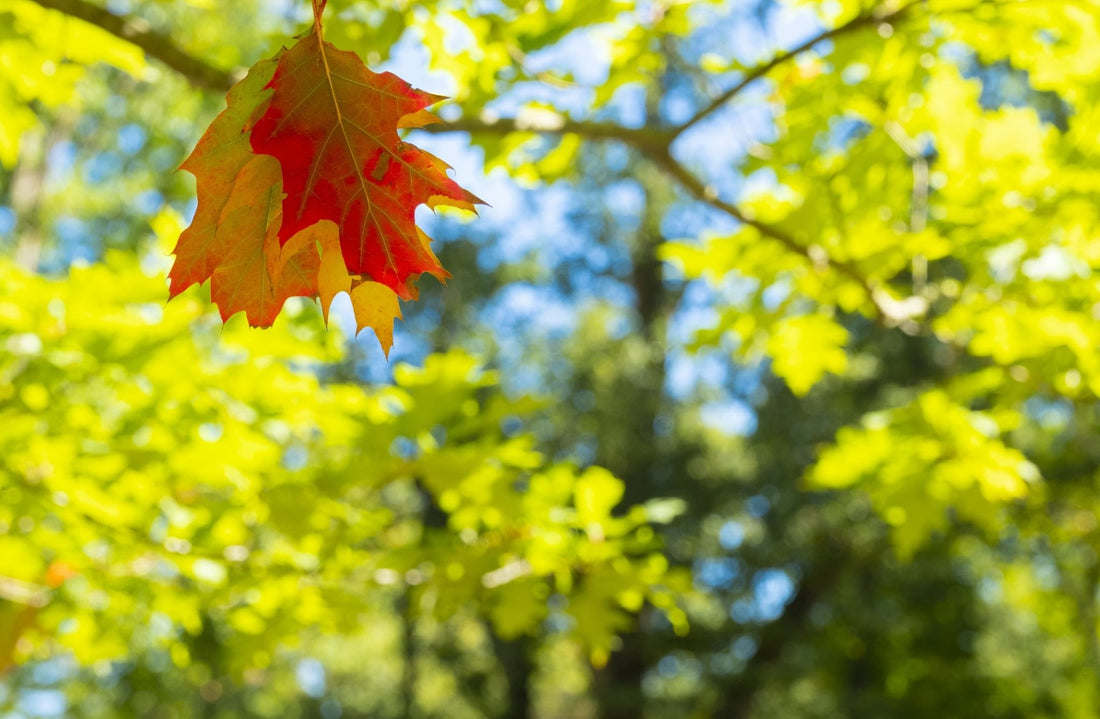Why Do Some Trees Change Colour Before Fall?
You might have noticed a few trees in your neighbourhood or garden starting to turn colour well before the calendar says it's officially fall. While most trees put on their colourful display in late September or October, some trees jump the gun and start the show early. So, why do some trees change colour sooner than others? Let’s explore the reasons behind this early transformation and what it might signal about a tree’s health and environment.
Why Do Some Trees Change Colour Before Fall
1. Species Characteristics
Some tree species are naturally inclined to start changing colour earlier than others. This can be due to genetics and how they’ve evolved to handle seasonal changes. Birch, dogwood, and sumac are classic examples. These trees are often among the first to take on fall hues, as they have a shorter growing season and are quicker to transition into dormancy.
Early colour changers may also be trees that are sensitive to light changes or temperature fluctuations. As days shorten and nights cool off, these trees quickly cue into the seasonal shift and begin their process of shutting down for winter.
2. Environmental Stress
A stressed tree is more likely to change colour earlier than a healthy one. Environmental stresses can include:
- Drought: When trees don’t get enough water during the summer, they may go into an early dormancy to conserve resources. Drought-stressed trees will often start to change colour and shed leaves sooner as they’re trying to survive with less water.
- Heat Stress: Extended periods of hot weather can trigger an early colour change. Similar to drought, heat stress can cause trees to shut down photosynthesis early to conserve energy.
- Poor Soil Quality: Trees growing in soil that lacks nutrients or has poor drainage may experience stress, causing an early colour change.
- Root Damage: If a tree’s roots have been damaged (from construction, compacted soil, or pests), it can impact the tree’s ability to absorb water and nutrients. This can lead to an early change in leaf colour as the tree struggles to keep up with its normal growth cycle.
3. Pests and Diseases
Some pests and diseases can also cause early colour changes. Leaf spot diseases, fungal infections, and pests like aphids or caterpillars can weaken a tree, causing it to change colour sooner. These invaders can sap the tree’s energy, which means the tree may cut the season short and start preparing for dormancy earlier than usual.
In some cases, early colour change can be a tree’s response to fight back against infection or pest attacks by conserving resources and slowing its growth.
4. Genetics and Individual Tree Variability
Even within the same species, some individual trees may change colour earlier due to genetic differences. It’s a little like how siblings might have different hair colours or grow at different rates. This variation can also be seen from year to year, as trees may respond differently depending on the specific growing conditions and stressors they’ve experienced throughout the season.
5. Microclimates
Microclimates can play a huge role in when a tree begins to change colour. Trees growing in a cooler, shaded area might change colour earlier than those in warmer, sunnier spots, even if they’re of the same species. Similarly, trees near bodies of water or in lower, frost-prone areas might react to the cooler temperatures faster, starting their colour change earlier than trees in more stable climates

Early Colour Change: A Sign to Check In
While early colour changes aren’t always a bad sign, they can be a signal that something’s not quite right with the tree’s environment or health. Here are a few things you can do if you notice early leaf changes:
- Check for pests or diseases: Examine the leaves, branches, and trunk for any unusual signs, like spots, holes, or pests.
- Water the tree: If it’s been a particularly dry summer, give your trees a good soak (especially in the evening). Remember that trees need deep, infrequent watering rather than frequent, shallow watering.
- Mulch and fertilize: Add a layer of mulch around the base of your tree to help it retain moisture. If the soil quality is low, consider using a slow-release, balanced fertilizer in the early fall.
- Prune damaged branches: If you notice dead or damaged branches, prune them off to reduce stress and allow the tree to focus on its healthy parts.
So, there you have it, early colour change can be a little sneak peek of fall, and while it sometimes signals stress, it’s also part of the natural cycle. If you see a few of your trees changing early, don’t panic—take a moment to appreciate the preview of fall’s beauty.
And, of course, keep an eye on them so you can give your trees the support they need to bounce back strong next season. After all, fall colour is beautiful no matter when it arrives, and knowing what might cause those early hues can help you enjoy the autumn show all the more.
Happy gardening!🍁




